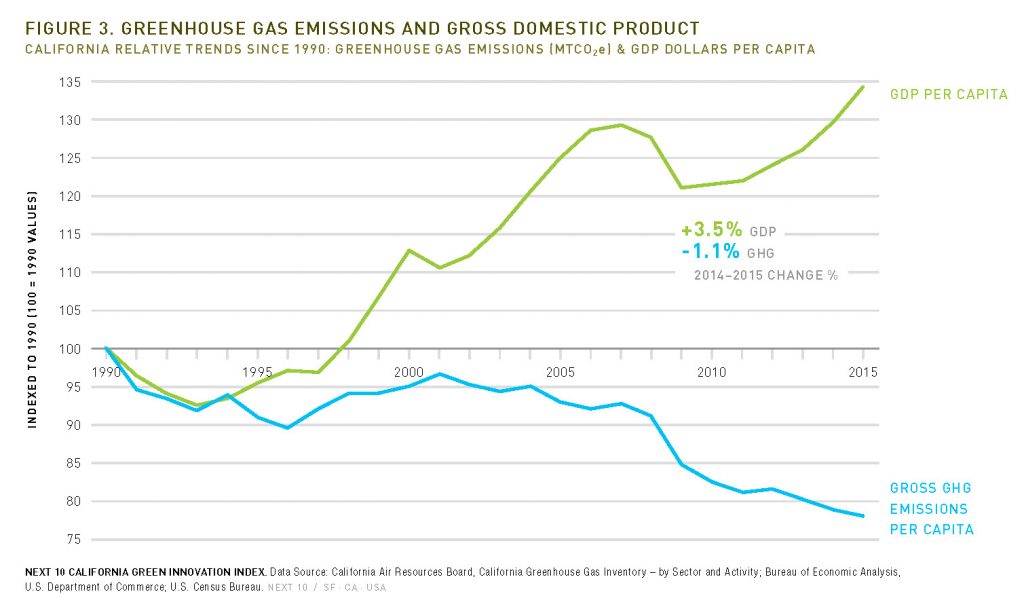Next 10 has just released its handy annual report card on California’s climate and economic progress, called the California Green Innovation Index. The good news is that it shows carbon emissions in the state continue to fall while economic innovation and growth increases:
 But the bad news is that transportation emissions are up:
But the bad news is that transportation emissions are up:
Despite an overall reduction in GHG emissions of 0.34 percent, transportation-related emissions were up by 2.7 percent in the state between 2014 and 2015. Lower gas prices and increased housing costs have pushed residents farther away from job centers, leading to an increase in commute times of 2.8 percent, while public transportation ridership fell 4.8 percent across the state.
The state can’t do too much about low gas prices (although the recent SB 1 gas tax increase will add a few pennies to each gallon). But it can facilitate more infill housing to lower costs and bring people closer to their jobs.
The problem though is the strong political opposition to reforms that would boost infill housing, which essentially involve taking away local authority over land use. The local government lobby and its wealthy homeowner allies have made prospects grim for making much progress on this critical climate strategy. Case in point: in a legislative session that was supposed to be the “year of housing,” the current proposals, while small steps in the right direction, are basically tweaks that have been effectively neutered by various interest groups.
As a result, the state’s main hope for reducing transportation emissions will be rapid electrification of vehicles. California is a leader on this front, but we’ll need exponential sales increases. That means a lot is riding on “mass market” vehicles like the Chevy Bolt and the upcoming Tesla Model 3 to be huge successes.
Bottom line: while California has a good story to tell on climate action, efforts to reduce emissions in the near term should focus on boosting electric vehicles and infill housing.


